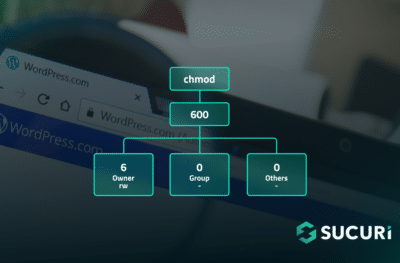Published on 03/15/2021 – Last Updated on 03/15/2021 by OTC
Posted by MiriamEllis
Google My Business is both a free tool and a suite of interfaces that encompasses a dashboard, local business profiles, and a volunteer-driven support forum with this branding. Google My Business and the associated Google Maps make up the core of Google’s free local search marketing options for eligible local businesses.
Today, we’re doing foundational learning! Share this simple, comprehensive article with incoming clients and team members to get off on the right foot with this important local business digital asset.
An introduction to the basics of Google My Business
First, let’s get on the same page regarding what Google My Business is and how to be part of it.
What is Google My Business?
Google My Business (GMB) is a multi-layered platform that enables you to submit information about local businesses, to manage interactive features like reviews and questions, and to publish a variety of media like photos, posts, and videos.
What is GMB eligibility?
Eligibility to be listed within the Google My Business setting is governed by the Guidelines for representing your business on Google, which is a living document that undergoes frequent changes. Before listing any business, you should consult the guidelines to avoid violations that can result in penalties or the removal of your listings.
You need a Google account to get started
You will need a Google account to use Google’s products and can create one here, if you don’t already have one. It’s best for each local business to have its own company account, instead of marketing agencies using their accounts to manage clients’ local business profiles.
When a local business you’re marketing has a large in-house marketing department or works with third party agencies, Google My Business permits you to add and remove listing owners and managers so that multiple people can be given a variety of permissions to contribute to listings management.
How to create and claim/verify a Google My Business profile
Once the business you’re marketing has a Google account and has determined that it’s eligible for Google My Business inclusion, you can create a single local business profile by starting here, using Google’s walkthrough wizard to get listed.
Fill out as many fields as possible in creating your profile. This guide will help you understand how best to fill out many of the fields and utilize many of the features. Once you’ve provided as much information as you can, you’ll be given options to verify your listing so that you can control and edit it going forward.
Alternatively, if you need to list 10+ locations of a business all at the same time, you can do a bulk upload via spreadsheet and then request bulk verification.
Where your Google My Business information can display
Once your data has been accepted into the GMB system, it will begin showing up in a variety of Google’s local search displays, including the mobile and desktop versions of:
Google Business Profiles
Your comprehensive Google Business Profile (GBP) will most typically appear when you search for a business by its brand name, often with a city name included in your search language (e.g. “Amy’s Drive Thru Corte Madera”). In some cases, GBPs will show for non-branded searches as well (e.g. “vegan burger near me”). This can happen if there is low competition for a search term, or if Google believes (rightly or wrongly) that a search phrase has the intent of finding a specific brand instead of a variety of results.
Google Business Profiles are extremely lengthy, but a truncated view looks something like this, located to the right of the organic search engine results:

Google Local Packs
Local packs are one of the chief displays Google uses to rank and present the local business information in their index. Local packs are shown any time Google believes a search phrase has a local intent (e.g. “best vegan burger near me”, “plant-based burger in corte madera”, “onion rings downtown”). The searcher does not have to include geographic terms in their phrase for Google to presume the intent is local
Most typically these days, a local pack is made up of three business listings, with the option to click on a map or a “view all” button to see further listings. On occasion, local packs may feature fewer than three listings, and the types of information Google presents in them varies .
Local pack results look something like this on desktop search, generally located above the organic search results:

Google Local Finders
When a searcher clicks through on the map or the “view all” link in a local pack, they will be taken to the display commonly known as the Local Finder. Here, many listings can be displayed, typically paginated in groups of ten, and the searcher can zoom in and out on the map to see their options change.
The URL of this type of result begins google.com/search. Some industries, like hospitality have unique displays, but most local business categories will have a local finder display that looks like this, with the ranked list of results to the left and the map to the right:

Google Maps
Google Maps is the default display on Android mobile phones, and desktop users can also choose to search via this interface instead of through Google’s general search. You’ll notice a “maps” link at the top of Google’s desktop display, like this:

Searches made via Google Maps yield results that look rather similar to the local finder results, though there are some differences. It’s a distinct possibility that Google could, at some point, consolidate the user experience and have local packs default to Google Maps instead of the local finder.
The URL of these results begins google.com/maps instead of google.com/search and on desktop, Google’s ranked Maps’ display looks like this:

The GMB dashboard is where you manage most of this
Once you’ve created and claimed your Google Business Profiles, you’ll have access to managing most (but not all) of the features they contain in your Google My Business dashboard, which looks like this:

The GMB dashboard has components for ongoing management of your basic contact info, reviews, posts, images, products and other features.
GMB Insights

The GMB dashboard also hosts the analytical features called GMB Insights. It’s a very useful interface, though the titles and functions of some of its components can be opaque. Some of the data you’ll see in GMB Insights includes:
- How many impressions happened surrounding searches for your business name or location (called Direct), general searches that don’t specify your company by name but relate to what you offer (called Discovery), and searches relating to brands your business carries (called Branded).
- Customer actions, like website visits, phone calls, messaging, and requests for driving directions.
- Search terms people used that resulted in an impression of your business.
There are multiple other GMB Insights features, and I highly recommend this tutorial by Joy Hawkins for a next-level understanding of why reporting from this interface can be conflicting and confusing. There’s really important data in GMB Insights, but interpreting it properly deserves a post of its own and a bit of patience with some imperfections.
When things go wrong with Google My Business
When engaging in GMB marketing, you’re bound to encounter problems and find that all kinds of questions arise from your day-to-day work. Google relies heavily on volunteer support in their Google My Business Help Community Forum and you can post most issues there in hopes of a reply from the general public or from volunteer contributors titled Gold Product Experts.
In some cases, however, problems with your listings will necessitate speaking directly with Google or filling out forms. Download the free Local SEO Cheat Sheet for robust documentation of your various GMB support options.
How to use Google My Business as a digital marketing tool

Let’s gain a quick, no-frills understanding of how GMB can be used as one of your most important local marketing tools.
How to drive local business growth with Google’s local features
While each local business will need to take a nuanced approach to using Google My Business and Google Maps to market itself, most brands will maximize their growth potential on these platforms by following these seven basic steps:
1) Determine the business model (brick-and-mortar, service area business, home-based business, or hybrid). Need help? Try this guide.
2) Based on the business model, determine Google My Business eligibility and follow the attendant rules laid out in the Guidelines for representing your business on Google.
3) Before you create GMB profiles, be certain you are working from a canonical source of data that has been vetted by all relevant parties at the business you’re marketing. This means that you’ve checked and double-checked that the name, address, phone number, hours of operation, business categories and other data you have about the company you are listing is 100% accurate.
4) Create and claim a profile for each of the locations you’re marketing. Depending on the business model, you may also be eligible for additional listings for practitioners at the business or multiple departments at a location. Some models, like car dealerships, are even allowed multiple listings for the car makes they sell. Consult the guidelines. Provide as much high quality, accurate, and complete information as possible in creating your profiles.
5) Once your listings are live, it’s time to begin managing them on an ongoing basis. Management tasks will include:
- Analyzing chosen categories on an ongoing basis to be sure you’ve selected the best and most influential ones, and know of any new categories that appear over time for your industry.
- Uploading high quality photos that reflect inventory, services, seasonality, premises, and other features.
- Acquiring and responding to all reviews as a core component of your customer service policy.
- Committing to a Google Posts schedule, publishing micro-blog-style content on an ongoing basis to increase awareness about products, services, events, and news surrounding the locations you’re marketing.
- Populating Google Questions & Answers with company FAQs, providing simple replies to queries your staff receives all the time. Then, answer any incoming questions from the public on an ongoing basis.
- Adding video to your listings. Check out how even a brand on a budget can create a cool, free video pulled from features of the GMB listing.
- Commiting to keeping your basic information up-to-date, including any changes in contact info and hours, and adding special hours for holidays or other events and circumstances.
- Investigating and utilizing additional features that could be relevant to the model you’re marketing, like menus for goods and services, product listings, booking functionality, and so much more!
- Analyzing listing performance by reviewing Google My Business Insights in your dashboard, and using tactics like UTM tagging to track how the public is interacting with your listings.
Need help? Moz Local is Moz’s software that helps with ongoing management of your listings not just on Google, but across multiple local business platforms.
6) Ongoing education is key to maintaining awareness of Google rolling out new features, altering platforms, and adjusting how they weight different local ranking factors. Follow local SEO experts on social media, subscribe to local SEO newsletters, and tune in to professional and street level industry surveys to continuously evaluate which factors appear to be facilitating maximum visibility and growth.
7) In addition to managing your own local business profiles, you’ll need to learn to view them in the dynamic context of competitive local markets. You’ll have competitors for each search phrase for which you want to increase your visibility and your customers will see different pack, finder, and maps results based on their locations at the time of search. Don’t get stuck on the goal of being #1, but do learn to do basic local competitive audits so that you can identify patterns of how dominant competitors are winning.
In sum, providing Google with great and appropriate data at the outset, following up with ongoing management of all relevant GMB features, and making a commitment to ongoing local SEO education is the right recipe for creating a growth engine that’s a top asset for the local brands you market.
How to optimize Google My Business listings
This SEO forum FAQ is actually a bit tricky, because so many resources talk about GMB optimization without enough context. Let’s get a handle on this topic together.
Google uses calculations known as “algorithms” to determine the order in which they list businesses for public viewing. Local SEOs and local business owners are always working to better understand the secret ranking factors in Google’s local algorithm so that the locations they’re marketing can achieve maximum visibility in packs, finders, and maps.
Many local SEO experts feel that there are very few fields you can fill out in a Google Business Profile that actually have any impact on ranking. While most experts agree that it’s pretty evident the business name field, the primary chosen category, the linked website URL, and some aspects of reviews may be ranking factors, the Internet is full of confusing advice about “optimizing” service radii, business descriptions, and other features with no evidence that these elements influence rank.
My personal take is that this conversation about GMB optimization matters, but I prefer to think more holistically about the features working in concert to drive visibility, conversions, and growth, rather than speculating too much about how an individual feature may or may not impact rank.
Whether answering a GMB Q&A query delivers a direct lead, or writing a post moves a searcher further along the buyer journey, or choosing a different primary category boosts visibility for certain searches, or responding to a review to demonstrate empathy wins back an unhappy customer, you want it all. If it contributes to business growth, it matters.
Why Google My Business plays a major role in local search marketing strategy

As of mid-2020, Google’s global search engine market share was at 92.16%. While other search engines like Bing or Yahoo still have a role to play, their share is simply tiny, compared to Google’s. We could see a shift of this dynamic with the rumored development of an Apple search engine, but for now, Google has a near-monopoly on search.
Within Google’s massive share of search, a company representative stated in 2018 that 46% of queries have a local intent. It’s been estimated that Google processes 5.8 billion global daily queries. By my calculation, this would mean that roughly 2.7 billion searches are being done every day by people seeking nearby goods, services, and resources. It’s also good to know that, according to Google, searches with the intent of supporting local business increased 20,000% in 2020.
Local businesses seeking to capture the share they need of these queries to become visible in their geographic markets must know how to incorporate Google My Business marketing into their local SEO campaigns.
A definition of local search engine optimization (local SEO)
Local SEO is the practice of optimizing a business’s web presence for increased visibility in local and localized organic search engine results. It’s core to providing modern customer service, ensuring today’s businesses can be found and chosen on the internet. Small and local businesses make up the largest business sector in the United States, making local SEO the most prevalent form of SEO.
Local SEO and Google My Business marketing are not the same thing, but learning to utilize GMB as a tool and asset is key to driving local business growth, because of Google’s near monopoly.
A complete local SEO campaign will include management of the many components of the Google My Business profile, as well as managing listings on other location data and review platforms, social media publication, image and video production and distribution, and a strong focus on the organic and local optimization of the company website. Comprehensive local search marketing campaigns also encompass all the offline efforts a business makes to be found and chosen.
When trying to prioritize, it can help to think of the website as the #1 digital asset of most brands you’ll market, but that GMB marketing will be #2. And within the local search marketing framework, it’s the customer and their satisfaction that must be centered at every stage of on-and-offline promotion.
Focus on GMB but diversify beyond Google
Every aspect of marketing a brand contains plusses, minuses and pitfalls. Google My Business is no exception. Let’s categorize this scenario into four parts for a realistic take on the terrain.
1) The positive
The most positive aspect of GMB is that it meets our criteria as owners and marketers of helping local businesses get found and chosen. At the end of the day, this is the goal of nearly all marketing tactics, and Google’s huge market share makes their platforms a peerless place to compete for the attention of and selection by customers.
What Google has developed is a wonder of technology. With modest effort on your part, GMB lets you digitize a business so that it can be ever-present to communities, facilitate conversations with the public which generate loyalty and underpin everything from inventory development to quality control, and build the kind of online reputation that makes brands local household names in the offline world.
2) The negative
The most obvious negative aspects of GMB are that its very dominance has cut Google too much slack in letting issues like listing and review spam undermine results quality. Without a real competitor, Google hasn’t demonstrated the internal will to solve problems like these that have real-world impacts on local brands and communities.
Meanwhile, a dry-eyed appraisal of Google’s local strategy observes that the company is increasingly monetizing their results. For now, GMB profiles are free, but expanding programs like Local Service Ads point the way to a more costly local SEO future for small businesses on tight budgets
Finally, local brands and marketers (as well as Google’s own employees) are finding themselves increasingly confronted with ethical concerns surrounding Google that have made them the subject of company walkouts, public protests, major lawsuits, and government investigations. If you’re devoting your professional life to building diverse, inclusive local communities that cherish human rights, you may sometimes encounter a fundamental disconnect between your goals and Google’s.
3) The pitfall
Managing your Google-based assets takes time, but don’t let it take all of your time. Because local businesses owners are so busy and Google is so omnipresent, a pitfall has developed where it can appear that GMB is the only game in town.
The old adage about eggs in baskets comes into play every time Google has a frustrating bug, monetizes a formerly-free business category, or lets competitors and lead generators park their advertising in what you felt was your space. Sometimes, Google’s vision of local simply doesn’t match real-world realities, and something like a missing category or an undeveloped feature you need is standing in the way of fully communicating what your business offers.
The pitfall is that Google’s walls can be so high that the limits and limitations of their platforms can be mistaken as all there is to local search marketing.
4) The path to success
My article on how to feed, fight, and flip Google was one of the most-read here on the Moz blog in 2020. With nearly 14,000 unique page views, this message is one I am doubling down on in 2021:
- Feed Google everything they need to view the businesses you’re marketing as the most relevant answers to people in close proximity to brand locations so that the companies you promote become the prominent local resources in Google’s index.
- Fight spam in the communities you’re marketing to so that you’re weeding out fake and ineligible competitors and protecting neighbors from scams, and take principled stands on the issues that matter to you and your customers, building affinity with the public and a better future where you work and live.
- Flip the online scenario where Google controls so much local business fate into a one-on-one environment in which you have full control over creating customer experiences exceptional enough to win repeat business and WOM recommendations, outside the GMB loop. Turn every customer Google sends you into a keeper who comes directly to you — not Google — for multiple transactions.
GMB is vital, but there’s so much to see beyond it! Get listed on multiple platforms and deeply engage in your reviews across them. Add generous value to neighborhood sites Nextdoor, or on old school fora that nobody but locals use. Forge B2B alliances and join the Buy Local movement to become a local business advocate and community sponsor. Help a Reporter Out. Evaluate whether image, video, or podcasting media could boost your brand to local fame. Profoundly grow your email base. Be part of the home delivery revival, fill the hungry longing for bygone quality and expertise, or invest in your website like never before and make the leap into digital sales. The options and opportunities are enticing and there’s a right fit for every local brand.
Key takeaway: don’t get stuck in Google’s world — build your own with your customers from a place of openness to possibilities.
A glance at the future of Google My Business

By now, you’ve likely decided that investing time and resources into your GMB assets is a basic necessity to marketing a local business. But will your efforts pay off for a long time to come? Is GMB built to last, and where is Google heading with their vision of local?
Barring unforeseen circumstances, yes, Google My Business is here to stay, though it could be rebranded, as Google has often rebranded their local features in the past. Here are eight developments I believe we could see over the next half decade:
- As mentioned above, Google could default local packs to Maps instead of the local finder, making their network a bit tidier. This is a good time to learn more about Google Maps, because some aspects of it are quite different.
- Pay-to-play visibility will become increasingly prevalent in packs, organic, and Maps, including lead generation features and trust badges.
- If Apple Maps manages to make Google feel anxious, they may determine to invest in better spam filters for both listings and reviews to defend the quality of their index.
- Location-based image filters and search features will grow, so photograph your inventory.
- Google will make further strides into local commerce by surfacing, and possibly even beginning to take commissions from, sales of real time inventory. The brands you market will need to decide whether to sell via Google, via their own company websites, or both.
- Google could release a feature depicting the mapped delivery radii of brick-and-mortar brands. Home delivery is here to stay, and if it’s relevant to brands you market, now is the time to dive in.
- Google has a limited time window to see if they can drive adoption of Google Messaging as a major brand-to-consumer communications platform. The next five years will be telling, in this regard, and brands you market should discuss whether they wish to invite Google into their conversations with customers.
- Google could add public commenting on Google Posts to increase their interactivity and push brands into greater use of this feature. Nextdoor has this functionality on their posts and it’s a bit of a surprise that Google doesn’t yet.
What I’m not seeing on the near horizon is a real commitment to better one-on-one support for the local business owners whose data makes up Google’s vast and profitable local index. While the company has substantially increased the amount of automated communications it sends GMB listing owners, Google’s vision of local as an open-source, DIY free-for-all appears to continue to be where they’re at with this evolving venture.
Your job, then, is to be vigilant about both the best and worst aspects of the fascinating Google My Business platform, taking as much control as you can of how customers experience your brand in Google’s territory. This is no easy task, but with ongoing education, supporting tools, and a primary focus on serving the customer, your investment in Google My Business marketing can yield exceptional rewards!
Ready to continue your local SEO education? Read: The Essential Local SEO Strategy Guide.
Sign up for The Moz Top 10, a semimonthly mailer updating you on the top ten hottest pieces of SEO news, tips, and rad links uncovered by the Moz team. Think of it as your exclusive digest of stuff you don’t have time to hunt down but want to read!
![]()












Comments